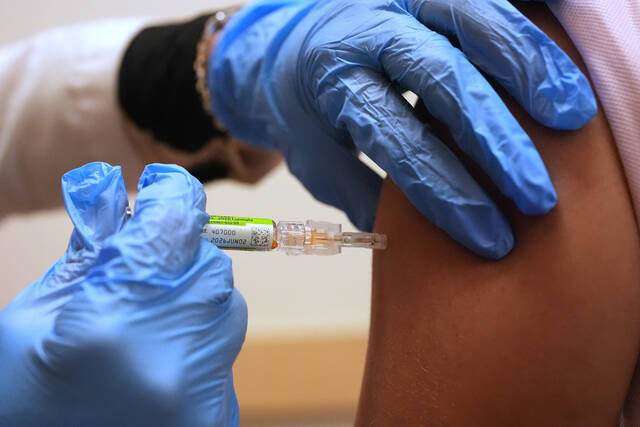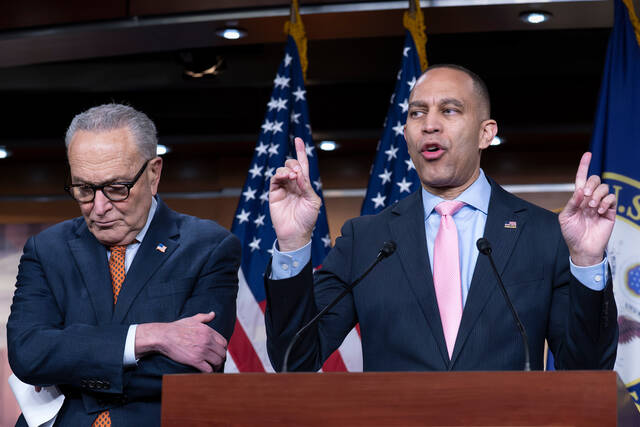During her medical training, Dr. Miriam Cremer watched a woman suffering from advanced cervical cancer bleed to death in Arcatao, El Salvador.
That preventable tragedy is what sowed the seeds of her Pittsburgh-based nonprofit, she said. Basic Health International’s mission is to develop ways to diagnose and treat cervical cancer.
Its first National Institutes of Health grant was awarded last year, for just over $480,000, to develop mobile machines that could be used to treat the cancer in low-resource areas like Central America. These machines are generally of the desktop variety, but the research would attempt to modify battery-operated devices so they could be used in places like El Salvador, according to the NIH proposal.
“This project will bring effective point-of-care triage and treatment to cervical cancer elimination programs,” according to the proposal.
The grant was awarded in the fall, but it hasn’t been received. Cremer’s organization, along with other biomedical firms and research hubs such as the University of Pittsburgh and Carnegie Mellon University, are among those in limbo since the Trump administration attempted to implement changes in what costs NIH grants will cover.
The change is on hold because of a federal court order that is one of several pending cases filed by state attorneys general, Pennsylvania Gov. Josh Shapiro and groups including the Association of American Universities, which counts CMU and Pitt as members.
These cases are protesting freezes and cuts in federal spending sought by the Trump administration and its Department of Government Efficiency.
The proposed changes to NIH funding would impose a 15% limit on overhead costs. Such a restriction on funding could hamper medical research and advances, industry experts said.
“I’m not sure the people making these decisions realize how much this could drastically affect people’s lives,” said Cremer, of Point Breeze.
Basic Health Research employs five people in Pittsburgh, including Cremer, two in New York and about 30 who are based in El Salvador, Cremer said.
Areas with few advanced medical resources such as Central America are places where cervical cancer is the biggest threat, Cremer said.
“We want to do this exciting work. That’s the end game,” she said. “It’s just there’s so much uncertainty. Are we going to get the money? Are foreign subcontractors OK?”
Fighting the overdose epidemic
Larry Zana’s focus is on a different public health crisis: addiction treatment and overdose reversal.
His firm, South Side-based Consegna Pharma, has about five researchers who are working to develop an overdose reversal drug to address stronger forms of fentanyl that are becoming more prevalent.
Last year, Consegna was awarded an NIH grant of just over $837,000 to develop a stronger, longer-acting version of the overdose reversal drug naloxone.
“The emergence of illicit, highly potent synthetic opioids such as fentanyl is a key contributing factor to the recent spike in opioid-related mortality, increasing tenfold since 2016,” Consegna’s NIH proposal states. “This new formulation will be especially useful in rural areas, where access to emergency medical services is often delayed.”
In the past seven years, Consegna has been awarded about $3 million in NIH funding to study addiction treatments including long-acting ketamine injections that wouldn’t carry with them the adverse effects of using the anesthetic.
Consegna’s $837,000 grant includes about $94,000 — 11% — in indirect costs. That would be under the new 15% threshold if the math were that simple.
It isn’t, Zana said, because indirect costs are spread across different grants and different funding years. About 40% of Consegna’s NIH funding goes toward indirect costs, Zana said.
Indirect costs are essentially overhead costs and include things like utility bills, the cost of lab space, supplies and other elements not directly related to the research.
“In the longer term,” Zana said, “the concern is that funding could be reduced in some way.”
‘There is going to be a reckoning’
“How this affects Larry and me is small potatoes,” said Christian Manders of Bloomfield.
Manders is an executive with Promethean Life Sciences and Undaunted Bio, two biomedical firms in Pittsburgh. Promethean was started by Manders’ father, Dr. Ernest K. Manders, a renowned plastic surgeon who’s known for innovations in skin grafts and tissue banks.
Manders said his firms aren’t affected because they don’t have recent NIH awards, but he’s among the local leaders in Pittsburgh’s research community. He’s also a board member of Life Sciences PA, an industry trade group.
“It’s crippling to all these major research universities,” Manders said. “There is going to be a reckoning. This impacts pretty much every state in the nation.”
NIH is Pitt’s largest federal research sponsor at nearly $700 million, funding that represents more than half of the university’s $1.2 billion in research expenditures, primarily focused on the health sciences, according to the university.
Carnegie Mellon, which received $37.4 million in research funding from NIH last year, released a statement that said the federal changes would have what it called immediate and sweeping consequences for research universities across the country.
CMU joined a federal lawsuit filed by the Association of American Universities that challenges the new guidance. CMU noted in a statement that a 15% cap would reduce the university’s reimbursement rate for NIH grants by more than two-thirds.
“This abrupt policy change would drastically undercut the ability of CMU and other leading research institutions to deliver on our mission and, in the process, would undermine the innovation ecosystem that powers U.S. competitiveness and enhances our societal well-being,” the statement read.
In Manders’ opinion, changes are afoot no matter the outcome of the court cases.
“This is the start of a negotiation,” he said.
It exposes faults in the present research and development system for what are collectively known as the life sciences, Manders said.
Research is expensive, and it has been effectively outsourced by pharmaceutical companies to universities and, in turn, funded by the government.
Institutions like Pitt and CMU could shift to getting industry-sponsored research, Manders said.
“I think this is just the start of a very long, protracted conflict. It’s a wake-up call,” he said. “I think our local universities and life sciences industry need to adapt a bit. It’s like sapping the lifeblood of the local biotech industry.”
While he doesn’t support the change, in some ways it’s inevitable, Manders said.
“We’re going to have to deal with it,” he said.
‘A huge disruption’
Christopher P. Molineaux worked in the West Wing as a press officer during George H.W. Bush’s term as president.
He also worked for Johnson & Johnson and was a vice president of the Pharmaceutical Research and Manufacturers of America. Today, he is president and CEO of Life Sciences PA, a trade group that represents 935 entities, including research institutions and businesses, many of which are dependent on NIH funding, he said.
There are more than $2 billion in NIH grants awarded to entities with ties to Pennsylvania each year, Molineaux said.
He uses the term “ecosystem” to describe the life sciences because the industry is similar to that found in nature where each entity is interdependent on the others: “Every entity thrives or dies off of each other,” Molineaux said.
The move to alter NIH funding, along with other cuts in federal spending being proposed by the Department of Government Efficiency and put into practice under executive orders signed by Trump, is creating a level of uncertainty, Molineaux said.
“This is a huge disruption and has the potential to halt the development of lifesaving therapeutic devices,” he said.
The cuts are focused on a field that’s already battling the laws of probability.
“You have to have a certain level of intestinal fortitude to keep pursuing these things, but that’s what leads to health care innovations,” Molineaux said. “The odds of success are extremely low.”
About 90% of the drugs and/or treatments a pharmaceutical company seeks Federal Drug Administration approval to market will fail, Molineaux said.
“These are already high-risk endeavors,” he said. “These companies are paying for many, many failures along the way.”
Molineaux conceded there’s room for improvement in the way government-funded research works, but he said this was a draconian approach that could have other consequences.
“Everything with these projects is integrated with everything else,” he said.
That means for every pharmaceutical company or university research program, there are other, smaller players involved that could be affected.
Life Science PA has encouraged its members to contact federal officials to voice their opposition to the moves, Molineaux said.
He also will be in touch personally with Pennsylvania’s congressional delegation, “so this is addressed before any real damage is done,” he said.
This story was updated Feb. 21 to correct the percentage of NIH funding used for indirect costs by Consegna Pharma.

















